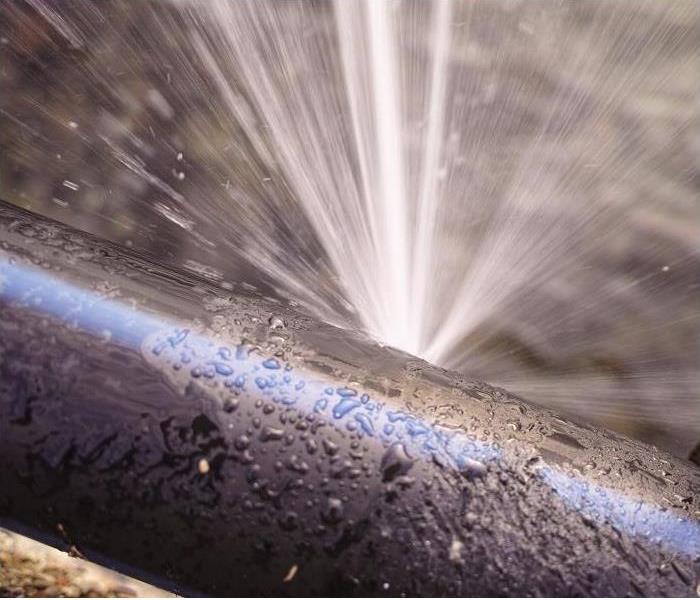Does the Movement of Air Effect Drying in Frederick Homes?
8/25/2020 (Permalink)
 Did your home experiene water damage? Call SERVPRO. We are equipped to handle any scope of water loss emergency.
Did your home experiene water damage? Call SERVPRO. We are equipped to handle any scope of water loss emergency.
Understanding Drying Science Elements Like Airflow and how it Impacts Your Household's Recovery After a Water Disaster can be Vital
As overwhelming as flood and water damages can be for Frederick homes and businesses, understanding the balance of elements necessary for efficient drying can show the need for professional water restoration companies. Our SERVPRO professionals have extensive training through coursework and continued education through renowned organizations like the Institute of Inspection, Cleaning and Restoration Certification (IICRC) to know the science of drying and how to apply this knowledge in your damaged house.
Water restoration for Frederick homes can encompass many tasks from the initial emergency services like a controlled demolition and debris removal through advanced drying techniques. Because drying is such a vital element to every water damage recovery task our professionals undertake, we must continually re-evaluate the conditions within the property to maintain the balance of the primary principles of moisture removal and efficient evaporation, including:
- Airflow – The movement of air can be a critical element to the efficiency of drying in a property after a water disaster. While this can refer to generated airflow by our air movers, it can also indicate the working knowledge of the ingress and egress of air from the drying zones.
- Temperature – Temperatures always seek to find a balance with adjacent areas, either inside or outside the structure. Higher temperatures can often allow for faster production of products and evaporation, but excessive temperatures can harm the drying process.
- Humidity – The present moisture content is also a consideration that must have a vital role in how efficiently materials and areas of your home get dried after an emergency. Moist environments slow the drying process, making the applications of dehumidifiers essential.
How Does Airflow Change from One Site to the Next?
Our technicians undergo continuous training and recertifications to ensure that the latest technologies and practices get used in the drying and restoration of your Frederick home. In addition to this, we train to prepare for the variances of damage from one property to the next. Even a singular aspect of drying like airflow can change from one home to the next based on location, materials used to build the house, available insulation, and the time of year. Airflow can impact the drying process in a few unique ways, including:
- Infiltration – This term describes air moving into a drying space from the outside of the house or another, unaffected area.
- Exfiltration – This term indicates air movement from the drying area to these external zones in the home or the outside.
- Equilibrium – This is the even condition that air seeks to find through infiltration and exfiltration from the drying zones. A balance is always wanted when irregularities exist in temperature or moisture content.
Can Changing Interior Conditions of the House Improve Airflow?
The more technicians understand and appreciate the balance of external and internal conditions during the drying process. The more these elements can be manipulated to promote more efficient drying times. It is always the focus of our SERVPRO team to provide the most cost-effective and prompt drying and restoration solutions for water-damaged structures. Often this involves manipulating other elements beyond airflow, including:
- Temperature - Raising the temperature inside the drying zone can promote exfiltration evaporation when this warmer airflow passes moist materials moving out of the drying area and unaffected portions.
- Humidity – Moisture content also plays a role in both exfiltration and infiltration of air in the drying area and beyond it. Regulating moisture in the environment can reduce the migration of water to other areas of the house.
- Air Movers – Generating airflow in the drying zones can promote evaporative drying and bring about equilibrium without excessive transference from one area of the property to another.
Can Finding an Equilibrium Change Other Drying Science Elements?
Each of these efficient drying principles in your home work together, balancing one another. When you modify one, such as increasing the temperature, you can often increase the moisture content through faster evaporation. Finding the balance so that all the parts work exclusively towards a productive drying result is a continual exchange in the restoration process.
Drying your home or business must happen as quickly as possible to reduce the need for tear-out and reconstruction. While we have in-house contractors to help with these repairs, it is typically more cost-effective to restore over replacing. Give our SERVPRO of Frederick County team a call anytime that you need us at (301) 662-1747.






 24/7 Emergency Service
24/7 Emergency Service